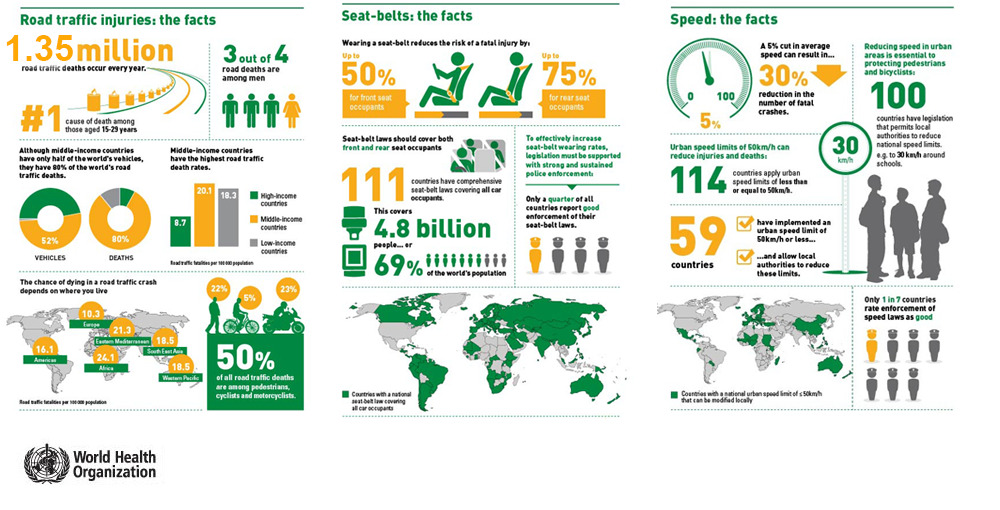
Key Facts of Road Accidents :
- According to WHO, more than 1.35 million people die on road accidents all over the world in a road traffic crash.
- The 2030 Agenda for Sustainable development has set an ambitious target of halving the global number of deaths and injuries from road traffic crashes by 2020.
- Road traffic cost more than 3% of their gross domestic product (GDP). India lost almost 56 billion annually according to WHO estimates.
- 93% of the world’s fatalities on the roads occur in low- and middle-income countries, even though these countries have approximately 60% of the world’s vehicles.
- Road traffic injuries are the leading cause of death for children and young adults aged 5-29 years.
Common Risk Factors for Road Accidents :
A Safe System Approach to road safety aims to ensure a safe transport system for all road users to detect and recognizes. Cause of common road accidents like human error, speeding, drunken drive , unsafe road structure, safety equipment not present properly, inadequate post-crash care, inadequate traffic laws.
Speeding: The main cause of road accidents traffic crash due to over speeding of vehicles by the owner of the vehicle. Crossing the average speed limit of vehicles. The risk of accidents increased by every increase in the average limit. The death risk for pedestrians hit by car fronts rises rapidly.
Drunken Driving: Driving under the influence of alcohol and any psychoactive substance or drug increases the chances of accidents and serious injuries. Due to the alcoholic content and drug have taken body will not able to control itself properly.
Nonuse of proper Safety Equipment: Vehicle owner life at risk due to non-compliance of safety measure during a ride like no helmets, seat belts, and child restraints. Wearing helmets and seat belt reduce 40 to 50 percent of injuries and death. The use of child restraints can lead to a 60% reduction in deaths.
Unsafe vehicles:Safe vehicles play a critical role in averting crashes and reducing the likelihood of serious injury. There are a number of UN regulations on vehicle safety that, if applied to countries’ manufacturing and production standards, would potentially save many lives. These include requiring vehicle manufacturers to meet front and side impact regulations, to include electronic stability control (to prevent over-steering), and to ensure airbags and seat-belts are fitted in all vehicles. Without these basic standards the risk of traffic injuries – both to those in the vehicle and those out of it – is considerably increased.
Inadequate post-crash care: Delays in detecting and providing care for those involved in a road traffic crash increase the severity of injuries. Care of injuries after a crash has occurred is extremely time-sensitive: delays of minutes can make the difference between life and death. Improving post-crash care requires ensuring access to timely prehospital care, and improving the quality of both prehospital and hospital care, such as through special training programs.

